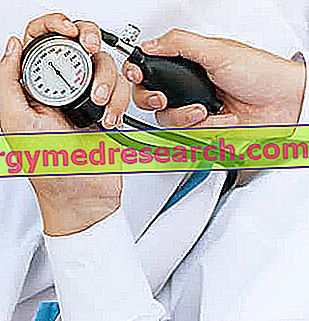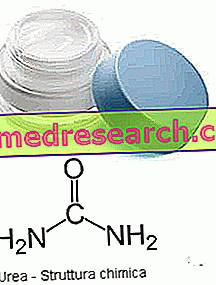Low blood pressure is an annoying and sometimes disabling condition.

In most cases it is considered a physiological condition, but at certain levels of severity it can be considered a disease.
Symptoms of low blood pressure appear more significantly based on the severity level; however the subjective predisposition plays a fundamental role.
The pressure is considered "low" when the parameters of systolic (maximum) and diastolic (minimum) fall below 90 and 60 mmHg.
It shows different levels of severity and becomes dangerous when it falls below the limits of 50 and 33 mmHg.
What to do
- The first step is to recognize the symptoms:
- Fatigue.
- Asthenia.
- Drowsiness.
- Poor mental clarity.
- Dizziness.
- Fainting.
- Shock (very rarely).
- Faced with the typical symptoms of hypotension, it is good to measure the pressure at home or at the pharmacy, or contact the doctor directly.
- Once identified one or more of the hypotensive symptoms, the doctor will exclude the presence of other disorders that can cause a similar symptomatology (for example hypoglycemia, psychosomatic reactions, dehydration, hypokalemia, anemia, combination of several factors, etc.).
- WARNING! The diagnosis can only be made by the doctor. However, remember that hypotension is often caused or aggravated by one or more metabolic factors.
- With a certain diagnosis of low blood pressure it becomes necessary to intervene on the triggering or potentially responsible causes:
- Attend environments with moderate temperatures. The perception of heat decreases the pressure because:
- Increases sweating, facilitating the loss of fluids and consequently reducing blood plasma.
- Causes significant peripheral vasodilation.
- In case of diarrhea and / or vomiting, treat the causative agent (infections, motion sickness, etc.):
- They cause dehydration and loss of mineral salts.
- They cause malabsorption.
- Prevent or quickly compensate for hypoglycemic crises:
- They cause some identical symptoms.
- They reduce the osmotic concentration of the plasma and facilitate diuresis, reducing the plasma volume (consequently the pressure).
- Worsen brain efficiency and aggravate symptoms.
- Prevent or compensate for anemia:
- Causes some identical symptoms.
- The reduction of proteins and the corpusculate in the blood decreases the oncotic pressure of the plasma, favoring diuresis and reducing pressure.
- Respect a balanced diet and prevent the accumulation of ketone bodies:
- They have a diuretic action and facilitate the reduction of the plasma volume by reducing the pressure.
- Treat or compensate for diseases such as:
- Heart failure (eg heart failure).
- Neurological disorders (eg neurodegenerative diseases).
- Hormonal dysfunctions (excess of ADH) etc.
- Practice regular physical activity:
- Stimulates circulation and stabilizes blood pressure levels. However, it is necessary to keep an eye on the level of sweating.
What NOT to do
- Ignore the symptoms: low blood pressure rarely occurs violently and without warning. This means that it is necessary to give proper importance to the symptoms, compensating for it as soon as possible.
- Do not measure pressure.
- Do not go to the doctor: we have already explained that the symptoms of hypotension are not characteristic. The risk is that of treating the condition responsible for the symptomatic situation incorrectly.
- Attend too hot environments.
- WARNING! We remember that the perception of heat and sweating are extremely subjective parameters.
- Do not cure diarrhea and / or vomit or compensate for the consequent nutritional losses.
- Neglecting hypoglycemic crises.
- Neglecting anemia.
- Follow ketogenic diets.
- Do not cure any diseases.
- Be sedentary.
- Exceed with sport, especially during the hottest hours of the summer months and without properly compensating for hydrosaline losses.
- Take diuretics.
- Follow drug therapies for high blood pressure, heart, antidepressants, etc. which aggravate hypotension. The solution could be to change the type of drug.
What to eat
Several causes of low blood pressure are food-related. On the other hand, diet is not always a cure.
Individual predisposition is difficult to counteract by changing only the lifestyle and the nutritional regime. Furthermore, the diet against low blood pressure does not have the same effect on all people and varies according to the etiology of hypotension.
The most important precautions to be taken in the event of hypotension are:
- If ABSENT, add a little salt to the diet. This can be discretionary (added to the dish), be part of the recipes or be part of the food production cycle (especially the preserved).
- WARNING! It is advisable not to exceed, however, with cured meats, aged cheeses and snacks, in order to avoid: hypercholesterolemia, hyperglycemia, hypertriglyceridemia, the accumulation of nitrates etc.
- Chew natural licorice sticks.
- Promote the consumption of soft drinks, above all: low mineral water, non-diuretic centrifuged vegetables and fruits, isotonic drinks, etc.
- It is very useful to eat numerous and not very abundant meals; this habit facilitates the stabilization of blood glucose and prevents the digestive system from appropriating large amounts of blood, compromising the general blood flow.
- Increase the intake of iron (necessary for the synthesis of hemoglobin), vitamin C (which optimizes the absorption of iron), vitamin B12 and folic acid (also useful for the synthesis of hemoglobin) to prevent anemia:
- To guarantee the intake of iron, especially EME and ferrous (more bioavailable), it is necessary to eat:
- Muscle tissue: both of terrestrial and aquatic animals: horsemeat, bovine, swine, avian, fish, whole molluscs (also land snails), whole crustaceans etc.
- Eggs: any, especially the yolk.
- Offal and other fifth quarter: especially spleen and liver, but also marrow, diaphragm, heart, etc.
- To ensure the supply of vitamin C, citric acid and fructose, it is necessary to eat:
- Sweet and sour fruit: lemon, grapefruit, orange, mandarin, clementine, kiwi, cherries, strawberries etc.
- Vegetables and tubers: parsley, pepper, lettuce, spinach, radicchio, broccoli, tomato, potato etc.
- To ensure the intake of vitamin B12 (cobalamin) it is necessary to eat:
- The same foods source of heme iron. Furthermore, bacteria and yeasts are rich in vitamin.
- To ensure the intake of folic acid it is necessary to eat: liver, vegetables (eg tomatoes), sweet fruit (orange, apple, etc.) and legumes (eg beans).
NB . Folic acid and vitamin C are thermolabile molecules and break down with cooking. This means that to guarantee their contribution it is advisable to eat a part of the specific foods in a raw form.
What NOT to Eat
- Avoid meals that are too abundant: digestion requires blood, especially if overloaded.
- Avoid hypoglucid diets: the lack of sugars forces the body to metabolize only amino acids and fatty acids producing ketone bodies. These molecules are toxic and the physicist mainly eliminates them with urine; obviously, an excess of ketone bodies causes the increase in filtration, with the worsening of low pressure.
- Avoid certain drinks, such as:
- Minimal mineralized water: diuretic and poor in minerals useful for combating hypotension.
- Very hypertonic solutions: they can cause diarrhea.
- Diuretic drinks (herbal teas, decoctions, etc.): increase urine excretion and dehydration.
- Eliminate alcoholic beverages: alcohol exerts an immediate vasodilation function and increases diuresis, worsening hypotension.
- Exclude all unnecessary food supplements: excess molecules must be expelled with renal filtration; however, this procedure also requires the expulsion of water and can aggravate hypotension.
- Limit foods containing anti-nutritional molecules as much as possible. In particular, iron absorption can be reduced by mineral chelators, such as:
- Oxalic acid and oxalates: present in spinach, in rhubarb, in bran, in cabbages etc. (they degrade with cooking).
- Phytic acid and phytates: present in bran and undercooked legumes (they degrade with cooking).
- Excess of tannins: present in most fruits and vegetables, but abundant especially in: black wine, unripe persimmons, some herbs and herbal remedies (oak, acacia, chestnut) etc.
Natural Cures and Remedies
In addition to diet, other natural remedies against low blood pressure are:
- Licorice roots: thanks to glycity it has a moderately hypertensive role. They should be chewed without food.
- Hydrosaline supplements: rich in sodium and potassium, they can promote an increase in plasma volume and decrease the severity of hypotension.
- Small amounts of caffeine or theobromine or theophylline: they have a vasoconstrictor effect that can slightly increase blood pressure. On the contrary, excess increases diuresis favoring dehydration.
- Some argue that, although it has an immediate vasodilator effect, the daily use of chili peppers can exert a normotensive effect.
- Medical and medicinal herbs:
- Infusions based on mistletoe and hawthorn: they are normotensive and act positively on the high one but also on the low one.
- Hawthorn and valerian extract: in theory, by improving myocardial efficiency, they should be able to reduce the severity of hypotension.
- Swedish bitter: it is a herbal recipe in alcoholic solution with many beneficial properties. Contains: aloe, myrrh, saffron, angelica root, rhubarb root, carlina root, cassia leaves, turmeric root, natural camphor, Venetian teriacea and manna. Use a teaspoon diluted in a glass of water to take before main meals.
- Honey therapy according to R. Willfort: it has no relevant scientific evidence but some claim to find an improvement in hypotension.
Pharmacological care
- Erythropoietin: promotes the increase of red blood cells with consequent increase in blood pressure and reduction of any severe anemia:
- Epoetin (eg Eprex Alfa, Neo-Recormon, Binocrit, Abseamed).
- Corticosteroids: prevent the loss of mineral salts:
- Fludrocortisone (eg Florinef): used to treat Addison's disease and to increase blood pressure in the context of pathological hypotension.
- Vasopressors: they promote vasoconstriction and increase pressure:
- Midodrine (for example Gutron): 10 mg of oral active, three times a day.
- Norepinephrine or noradrenaline (eg Noradr Con FN): is a catecholamine that increases blood pressure. Therapy can be started with 2-4 mcg of drug per minute.
- Phenylephrine (eg Isonephrine, Phenyl CL DYN, Triaminic FLU, Nasomixin CM): to be taken subcutaneously or intramuscularly at a dose of 2-5 mg every 1-2 hours.
- Ethilephrine (eg Effortil): available in drops (each gram of product corresponds to 15 drops, and is equivalent to 7.5 mg of active ingredient), in tablets of 5 mg, in capsules of 25 mg or in solution for injection (10 mg ). It is used for the treatment of orthostatic hypotension.
- Antidiuretic hormone: since hypotension can cause nocturia, this drug can reduce the need to urinate during the night.
- Vasopressin (eg Pitressin): not available in Italy.
- Desmopressin (eg Minirin / Dvap): is an analogue of the previous one. 0.2 to 0.6 mg should be taken once a day before sleep.
- Anti-parkinson drugs: increase blood pressure and reduce symptoms. The choice depends on the severity of the hypotension.
Prevention
- Pay attention to the dosage of some drugs.
- Treat or compensate for cardiac and neurological disorders.
- Intervene on the diet:
- Keep yourself hydrated.
- Consume foods rich in water and drink a lot (even specific drinks).
- Banning diuretics, especially supplements and drugs.
- Avoid ketoacidosis.
- Prevent the salt deficiency of sodium and especially potassium.
- Avoid hypoglycemia and especially hypoglycemic crises.
- Avoid anemia (both sideropenic and megaloblastic).
- Limit sweating.
- Avoid hot places (atmosphere, bathroom, shower, saunas, Turkish bath, etc.); cause vasodilation.
Medical Treatments
There are no medical treatments against low blood pressure unless it depends on primary diseases so severe as to require surgery or otherwise.



